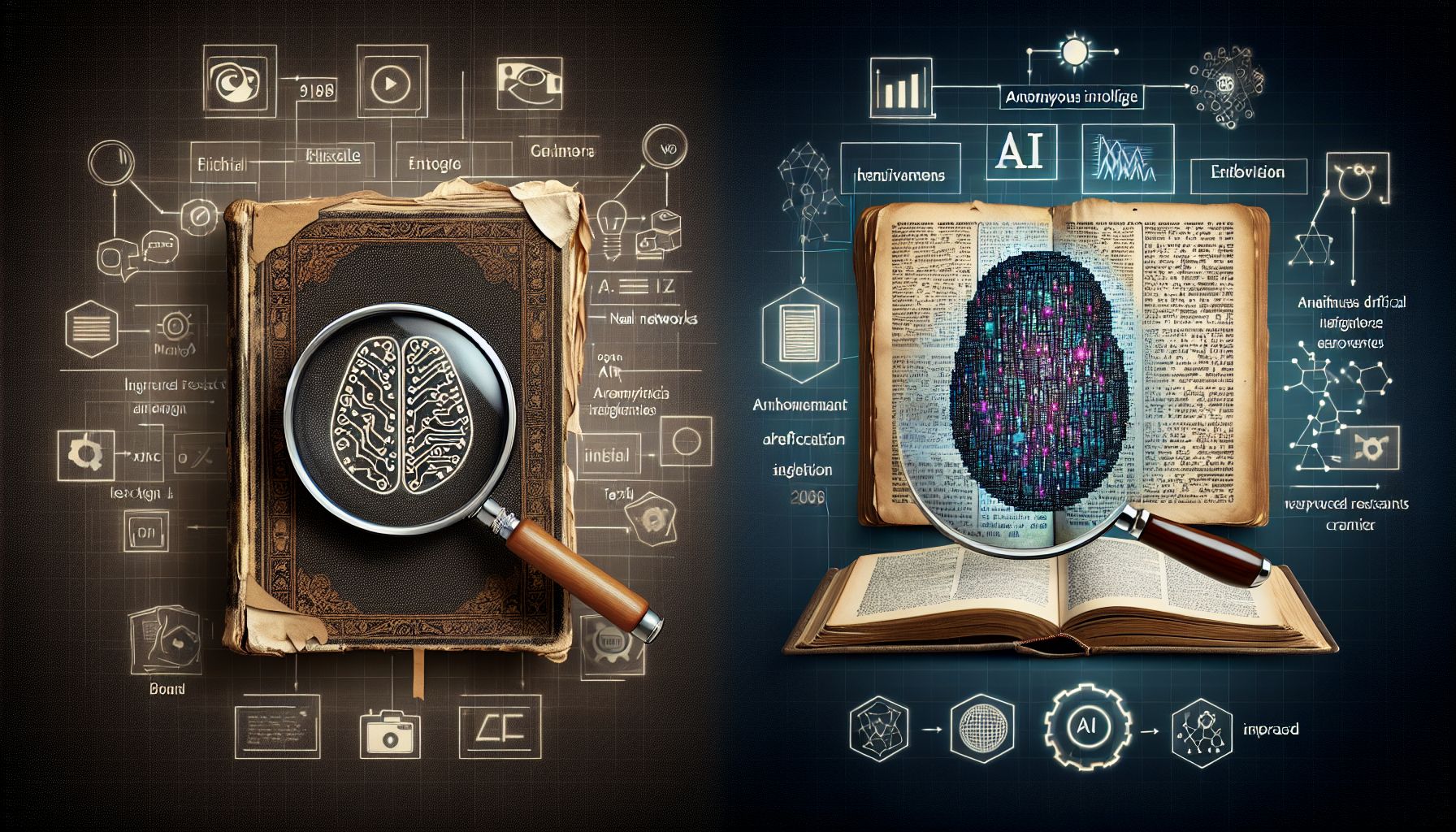📌 Let’s explore the topic in depth and see what insights we can uncover.
⚡ “Did you know GPT-3, OpenAI’s latest conversational AI, has 175 billion machine learning parameters, making it a whopping 116 times more complex than its predecessor, GPT-2? Dive in as we lift the hood on the awe-inspiring power of GPT-
Have you ever wondered how the advancements in AI technology have shaped our lives? Are you curious about the latest AI models and how they compare to their predecessors? If yes, then buckle up, this ride through the world of OpenAI’s GPT-2 and GPT-3 is just for you! 🚀 In this blog post, we’ll dive into the intricate details of these AI models. We’ll explore their differences, improvements, and how they have revolutionized machine learning. So, sit back, relax, and let’s embark on this fascinating journey of artificial intelligence and machine learning. 🤓
🤖 GPT-2: The AI Powerhouse

"Unveiling the Evolution: GPT-2 to GPT-3"
Before we head to the star of the show (GPT-3), it’s important to understand its predecessor, GPT-2. Launched by OpenAI in 2019, GPT-2 is a large transformer-based language model with 1.5 billion parameters. This AI powerhouse can generate human-like text that is eerily indistinguishable from that written by a human. GPT-2 was trained on a diverse range of internet text, but it’s important to note that it doesn’t know anything about the documents it was trained on. It’s a text-based model, meaning it doesn’t understand the context of the information it generates. It just predicts the next word in a sentence based on the previous words it’s been trained on.
Some key features of GPT-2 include:
Zero Shot
Given a task it has never seen, GPT-2 can still generate reasonable answers.
Quality of Output
The output of GPT-2 is surprisingly good, and in some cases, comparable to a human.
Language Understanding
Even though it’s a text-based model, GPT-2 has a rudimentary understanding of language.
However, GPT-2 does have its limitations. It sometimes writes nonsensical or irrelevant text, and it can be sensitive to slight changes in input phrasing. Also, it can’t tell fact from fiction, leading to potential misuse and dissemination of false information.
🚀 GPT-3: The New Kid on the AI Block
After setting the stage with GPT-2, OpenAI unveiled its latest and greatest AI model, GPT-3, in 2020. This model dwarfed its predecessor with a whopping 175 billion machine learning parameters. This model was also trained on a diverse range of internet text. However, GPT-3’s capacity is not the only thing that sets it apart from GPT-2.
GPT-3’s features include:
In-context Learning
GPT-3 can learn from a few examples given in the conversation prompt, making it more dynamic and adaptable.
Language Translation
It can translate between languages with a fair degree of accuracy.
Content Generation
GPT-3 can generate creative content like poems, stories, and even computer code!
Task Learning
Given a few examples, GPT-3 can learn a new task.
GPT-3 is an improvement over GPT-2 in many ways. It can understand context better, generate more relevant and accurate text, and adapt to new tasks more effectively. However, it too has its weaknesses. GPT-3 can still generate irrelevant or nonsensical text at times, and it can be misused to generate misleading or harmful information.
🎯 The Big Leap: Comparing GPT-2 and GPT-3
Now that we have a basic understanding of both GPT-2 and GPT-3, let’s dive into their differences and improvements. 1. Size and Capacity: GPT-3 is much larger than GPT-2, boasting 175 billion parameters compared to GPT-2’s 1.5 billion. This increased size allows GPT-3 to generate text that is more coherent and contextually relevant. 2. Understanding and Context: GPT-3 has a better understanding of language and context compared to GPT-2. This leads to more accurate and relevant text generation. 3. Task Learning: GPT-3 can learn new tasks given a few examples, a feature that GPT-2 lacks. This makes GPT-3 more adaptable and versatile. 4. Performance: On various benchmarks and tasks, GPT-3 outperforms GPT-2, showcasing its improved capabilities. 5. Limitations: Both GPT-2 and GPT-3 share similar limitations. They can generate irrelevant or nonsensical text, and they can be misused to generate harmful or misleading information. However, OpenAI has implemented safeguards and policies to mitigate these risks.
🧭 Conclusion
The journey from GPT-2 to GPT-3 is a testament to the rapid advancements in AI and machine learning. While GPT-2 was a breakthrough in its own right, GPT-3 has raised the bar with its improved understanding, adaptability, and performance. However, these powerful AI models also bring challenges and risks, emphasizing the need for responsible use and ethical guidelines. As we continue to explore the vast potentials of AI, we must remember that these models are tools. They reflect our knowledge and capabilities, but also our responsibilities. So, let’s use them wisely to create a better and smarter future! 🌟 Remember, with great power comes great responsibility. And in the world of AI, this couldn’t be more relevant. Happy exploring! 🚀
⚙️ Join us again as we explore the ever-evolving tech landscape.
